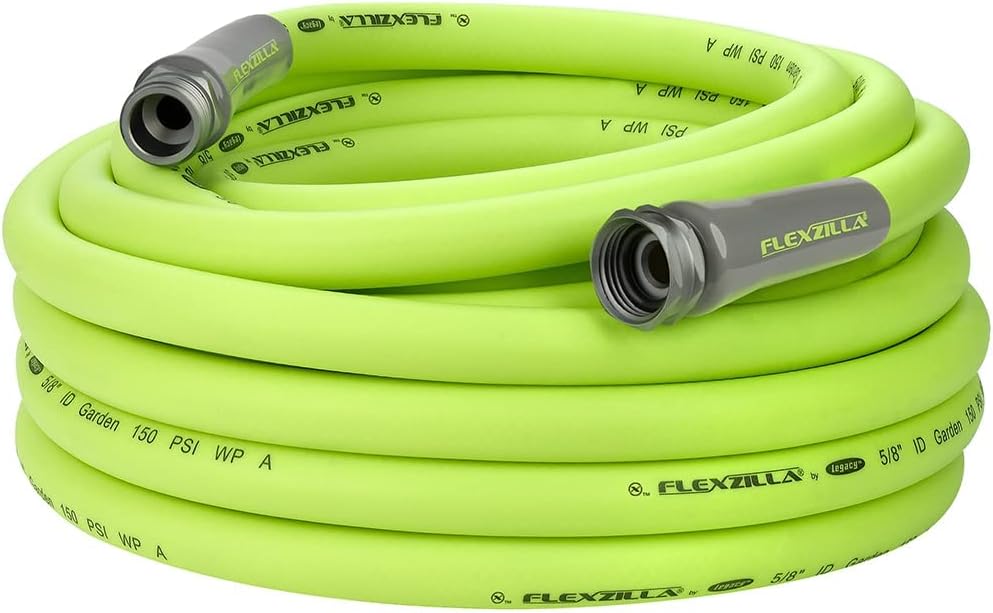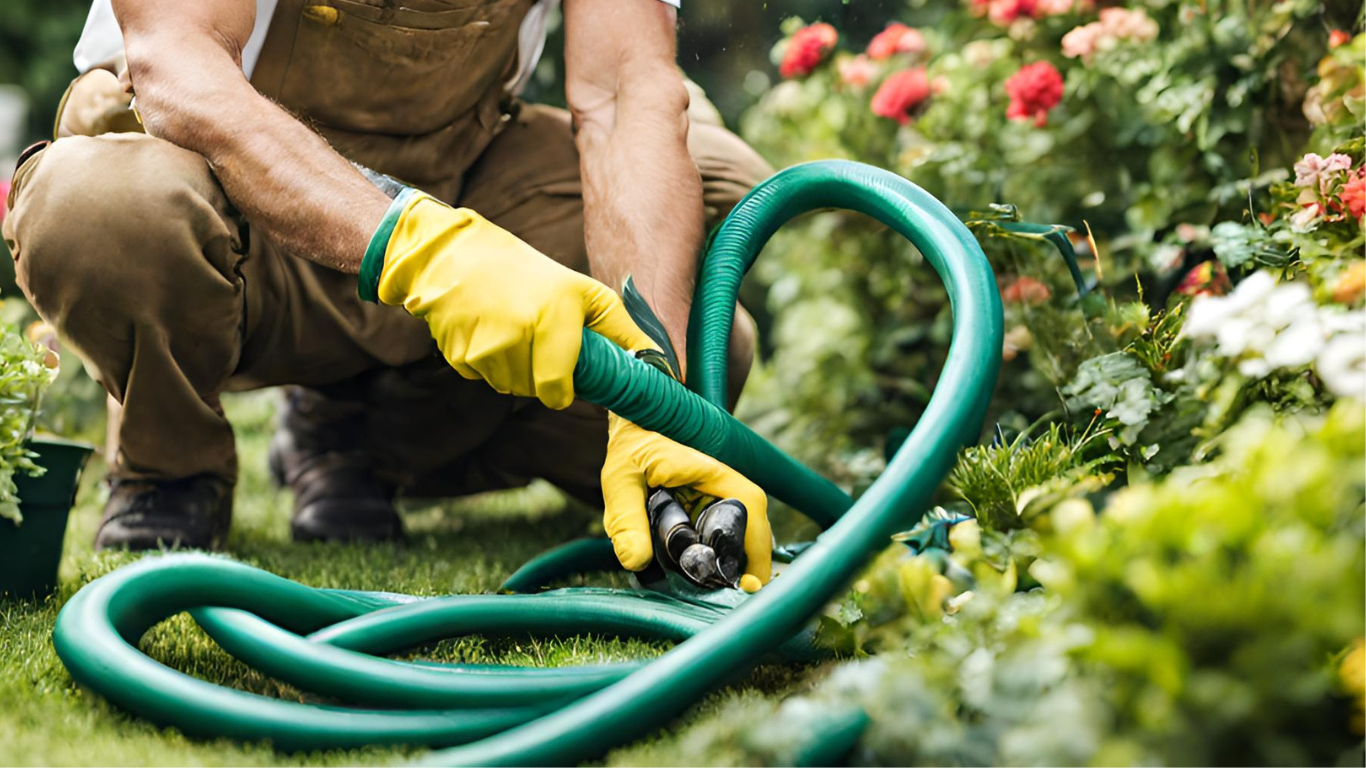Contents
Key Takeaways
-
Choosing the right garden hose is crucial for efficient watering and garden maintenance.
-
Consider hose length, diameter, material, and flexibility for your specific gardening needs.
-
Look for features like kink resistance, durability, and quality couplings to ensure longevity.
-
Maintain your hose by proper storage and regular cleaning to extend its life.
-
Invest in a quality garden hose, like the Lefree Garden Hose, for a hassle-free gardening experience.
The Essential Garden Hose: Your Guide to a Lush Garden

As someone who’s spent countless hours with my hands in the soil, I’ve learned that a trusty garden hose is more than just a tool—it’s the lifeline of your garden. A good hose makes all the difference between a thriving garden and one that just gets by. So, let’s talk about what makes a garden hose essential and how to pick the perfect one for you.
The Importance of a Good Hose
A garden hose isn’t just about water delivery; it’s about delivering water efficiently, effectively, and easily. A top-notch hose can save you time, conserve water, and reduce physical strain from hauling water cans or dealing with a subpar product. That’s why it’s worth taking the time to choose the right one.
Factors to Consider When Selecting a Hose
When you’re in the market for a new garden hose, think about the following:
-
Length: How far will you need to reach? Don’t buy more hose than you need—it’s heavier and more cumbersome.
-
Diameter: This affects water flow. Standard sizes are 5/8-inch for high-volume and 1/2-inch for lighter use.
-
Material: Rubber hoses are durable but heavy. Vinyl is lighter but less sturdy. A composite can be a good middle ground.
-
Flexibility: You want a hose that’s flexible enough to move around corners but not so much that it kinks and cuts off water flow.
Top Hoses on the Market
Lefree Garden Hose – A Superior Option

One standout is the Lefree Garden Hose. It’s a top-tier choice for those who want durability and ease of use. With innovative features like leak-proof technology, a flexible design that resists kinks, and a lightweight build, it’s a hose that meets the needs of serious gardeners. Plus, its quality materials and construction mean it’s built to last through many seasons of use.
Comparing Prices and Value
When comparing garden hoses, it’s not just about the sticker price. Consider the value over time. A cheaper hose might save you money upfront but could cost more in the long run if it needs frequent replacement. In contrast, investing in a quality hose like the Lefree Garden Hose might have a higher initial cost but offers better longevity and performance, making it more cost-effective over time.
Varieties of Hoses

There’s a hose for every gardener, whether you’re watering a few container plants on a patio or a sprawling backyard oasis. Let’s dive into the types you’ll encounter.
Materials and Durability
The material of your garden hose impacts its durability and best use case. Rubber hoses are the workhorses of the garden hose world—tough and long-lasting but also quite heavy. If you’re dealing with large areas and need something that can take a bit of a beating, rubber is the way to go.
Vinyl hoses are your lightweights—easy to move and store, perfect for those with smaller spaces or less demanding watering needs. And then there are the hybrids—often reinforced with a mesh layer—that offer a balance of durability and maneuverability.
Hose Lengths for Different Garden Sizes
Choosing the right length is a balance between convenience and efficiency. A common mistake is buying a hose that’s too long, thinking it’s better to have too much than not enough. But extra length adds weight and can make it harder to manage. Here are some pointers:
-
For small gardens or patios, a 25-foot hose should suffice.
-
For medium-sized gardens, 50 feet is often the sweet spot.
-
Large gardens might require 75 to 100 feet, but consider multiple hoses for different areas to avoid a single, cumbersome length.
Understanding Hose Flexibility and Kink Resistance
Nobody wants to deal with a hose that kinks every few feet. It’s frustrating and can damage the hose over time. Flexibility is important, but so is kink resistance. Look for hoses labeled “kink-free,” which are designed to avoid this annoyance. These hoses are often constructed with a special mesh or are made of higher-grade materials that maintain water flow no matter how they twist and turn.
Remember, a garden hose is a key tool in the art of gardening. It’s the conduit through which the life-giving water flows to your plants. Choose wisely, treat it well, and it will serve you and your garden for years to come. And most importantly, with the right hose in hand, your garden will not just survive, but thrive.
Hose Features That Matter

When you’re looking for a garden hose, you’re not just buying a length of tubing to transport water. You’re investing in the health of your garden. Therefore, you should consider a few key features that can make all the difference in your gardening experience.
Types of Couplings for Secure Connections
The point where your hose connects to the water source is critical. You want a secure fit to prevent leaks and water waste. Couplings—where the hose attaches to the tap and to nozzles or sprinklers—are usually made of plastic or metal. Plastic is cheaper but less durable, while metal, particularly brass or stainless steel, is more robust and provides a better seal. Look for couplings with a collar to reduce kinking and ensure a long-lasting connection.
And, it’s not just about the material; it’s about the design. Some couplings are ergonomically designed for easy attachment, even for those with less grip strength. Always opt for quality couplings; they’re the small details that can make or break your watering routine.
Water Flow Options: Nozzles and Sprinklers
The business end of your hose is where the magic happens. Nozzles and sprinklers control the flow, pattern, and pressure of the water coming out of your hose. They can be as simple as a twist nozzle, which adjusts from a fine mist to a jet stream, or as complex as a multifunctional spray gun with various settings for different tasks. Sprinklers can cover wide areas for lawn watering or be dialed in for gentle watering of delicate flowers.
Choosing the right nozzle or sprinkler is about understanding your garden’s needs. Do you need a gentle soak for new seedlings or a powerful jet for cleaning? Maybe both? There are plenty of options out there to suit every gardener’s needs.
Maintaining Your Hose

Like any tool, a garden hose needs a bit of TLC to keep it in top condition. Proper maintenance not only prolongs its life but also ensures it works efficiently every time you need it.
Proper Hose Storage Techniques
After each use, drain your hose before storing it. This prevents water from sitting inside, which can promote algae growth or cause freezing and damage in colder weather. Store your hose in a cool, dry place out of direct sunlight to prevent cracking and degradation of the material. Hose reels, hangers, or carts are great for keeping your hose tidy and kink-free.
Consider a hose reel with an auto-retract mechanism for convenience, or go for a manual crank model for a more budget-friendly option. Either way, coiling your hose properly will save you time and frustration in the long run.
Cleaning and Care to Prolong Life
Cleaning your hose might seem like a chore, but it’s straightforward and worth the effort. Simply fill a bucket with warm, soapy water, and run a cloth through the length of the hose to remove any dirt or grime. Rinse it well and allow it to dry fully before storage. Also, check for any wear or damage regularly, especially at the start of the gardening season.
Frequently Asked Questions (FAQs)

Got questions? Here are some answers to common queries about garden hoses that might help you make the right choice for your green space.
From selecting the perfect length to maintaining your hose for years of use, I’ve got you covered. Let’s dive into the details and get you on your way to a flourishing garden.
What Is the Best Hose Length for a Small Garden?
For a small garden or patio, a 25-foot hose is usually sufficient. It’s long enough to reach all areas without being so long that it becomes cumbersome to handle or store. Always measure your garden and consider the distance from your water source to the furthest point of your garden to ensure you choose the right length.
It’s also worth considering if you’ll be using the hose for other tasks, such as washing your car, which might require a little extra length. However, avoid the temptation to buy a hose that’s too long, as it can be heavy and difficult to manage.
How Do I Prevent My Hose from Kinking?
To prevent your hose from kinking, opt for a kink-resistant model. These hoses are designed with reinforced materials or special constructions that help maintain water flow even when the hose is twisted or turned.
When using your hose, lay it out straight and avoid sharp turns or twists. After use, coil it properly on a hose reel or hanger. This not only keeps it tidy but also prevents it from developing kinks or twists that could become permanent over time.
Lastly, don’t pull on the hose to stretch it out as this can create tension that leads to kinking. Instead, walk the hose out to its full length, guiding it gently to where you need it.
Can I Repair a Damaged Garden Hose?
Yes, you can often repair a damaged garden hose. Small punctures or cuts can be fixed with a hose repair kit, which usually includes a connector that you can insert into the hose after cutting out the damaged section. For leaks at the faucet connection, replacing the washer or the entire coupling can often fix the problem.
Are Expandable Hoses Worth the Investment?
Expandable hoses can be a great investment, especially for those with limited storage space or for gardeners who find traditional hoses too heavy. They’re lightweight and easy to maneuver, and they expand with water pressure, making them very convenient. However, they may not be as durable as standard rubber or composite hoses, so consider how often and intensively you’ll be using it before making a decision.
How Often Should I Replace My Garden Hose?
The lifespan of a garden hose depends on its material, quality, and how well it’s maintained. A well-cared-for, high-quality hose can last 5 to 10 years, if not longer. Look for signs of wear such as cracks, leaks, or kinks that can’t be straightened. If your hose is showing these signs, or if it’s becoming too stiff or brittle, it’s time for a replacement.
Regular maintenance, proper storage, and careful use can extend the life of your hose, so invest time in taking care of it. When it’s time for a new one, remember to recycle your old hose if possible, and consider upgrading to a model that will meet your gardening needs and last even longer, like the Lefree Garden Hose.




Leave a Reply